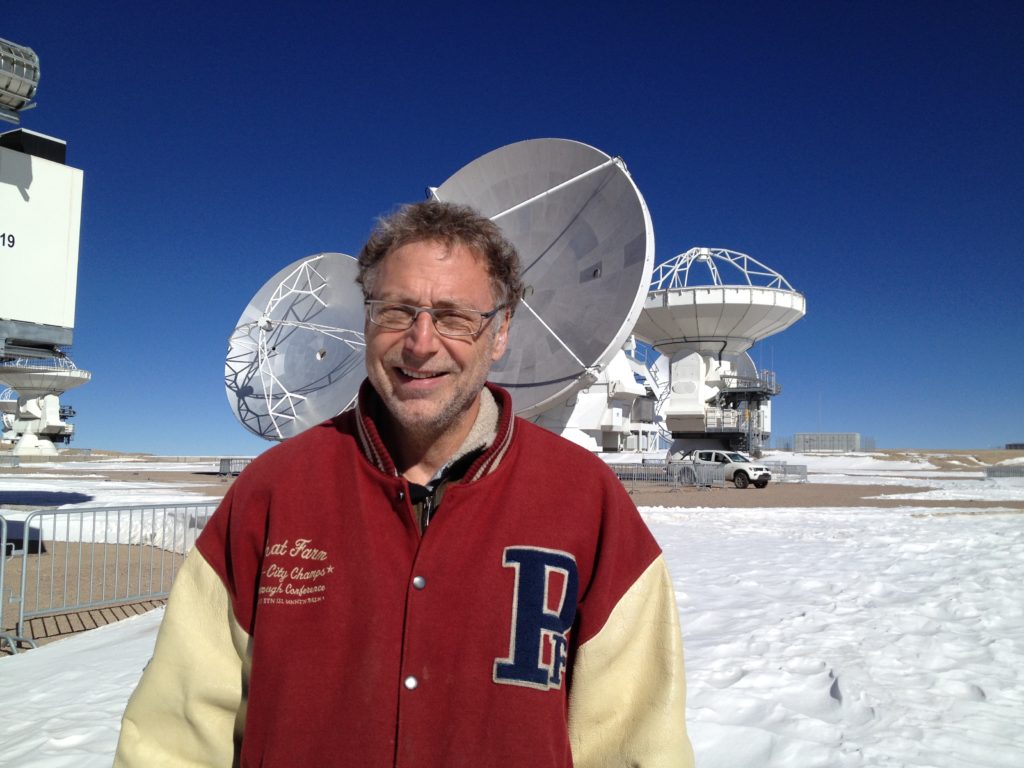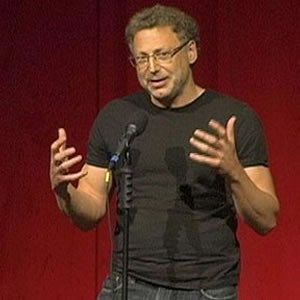Leonard Mlodinow is a theoretical physicist and author, recognized for groundbreaking discoveries in physics, and as the author of five best-selling books. His book The Grand Design, co-authored with Stephen Hawking, reached #1 on the New York Times best-seller list; his book Subliminal: How Your Unconscious Mind Rules Your Behavior, won the 2013 PEN/E.O. Wilson award for literary science writing; and his book The Drunkard's Walk: How Randomness Rules Our Lives was chosen as a New York Times notable book, and short-listed for the Royal Society book award. Dr. Mlodinow is also known through his many public lectures and media appearances on programs such ranging from Morning Joe, to Through the Wormhole, and for debating Deepak Chopra on ABC's Nightline.
Dr. Mlodinow was born in Chicago, Illinois, in 1954. Both of his parents were holocaust survivors. His father was a leader in the Jewish underground in Czestochowa, Poland, until he was shipped to the Buchenwald concentration camp in 1944. He was liberated by General Patton on April 11, 1945. At the time, he weighed 80 pounds. His mother was in a labor camp, also in Poland. They met in Brooklyn, New York, in 1948.

Dr. Mlodinow started his college education at Brandeis University in Waltham, Mass., in 1972, but dropped out when the Yom Kippur War began in the Fall of 1973, traveling to Israel to work on a kibbutz. While there, he fell in love with physics after reading some of Richard Feynman's books, which were the only English books in the kibbutz He returned to Brandeis the next school year and added a physics major to his double major in chemistry and math. He graduated in 1976, and in 1981 received his Ph.D. in theoretical physics from the University of California at Berkeley. His advisor was Eyvind Wichmann, who worked on axiomatic quantum field theory. His dissertation was on a subject that was more practical, at least if you are a physicist – Nikos Papanicolaou and Dr. Mlodinow developed a new approximation method in which you solve a problem in infinite dimensions, and then calculate corrections to account for the fact that we live in only three. For details, see these:
• "SO(2,1) Algebra and Large N Expansions in Quantum Mechanics," Annals of Physics 128, 314 (1980). With N. Papanicolaou.
• "Pseudo-spin Structure and Large N Expansions for a Class of Generalized Helium Hamiltonians," Annals of Physics 131, 1 (1981). With N. Papanicolaou. SO(2,1) Algebra and Large N Expansions in Quantum Mechanics," Annals of Physics 128, 314 (1980). With N. Papanicolaou.
• "Large N Expansions Work," in Proceedings of the IV Warsaw Symposium in Elementary Particle Physics. Z. Abjduk and K. Doroba, eds. (Warsaw, 1981).
• "Semi-Classical Perturbation Theory for the Hydrogen Atom in a Uniform Magnetic Field," Phys Rev A 25 1305 (1982). With C. Bender and N Papanicolaou.
• "A Semi-Classical Perturbation Theory for Quantum Mechanics," in Progress in Particle and Nuclear Physics, volume 8, Quarks and the Nucleus . D Wilkerson, ed. (Pergamon, 1982).
• "Solving the Schroedinger Equation with Use of 1/N Perturbation Theory," J Math Phys 25 943 (1984). With M. Shatz.
 After graduating, Dr. Mlodinow obtained a faculty position at the California Institute of Technology as Bantrell Research Fellow in Theoretical Physics. He then became an Alexander von Humboldt fellow at the Max-Planck-Institute for Physics and Astrophysics in Munich, Germany. In this period he was interested in quantum field theories inside dielectrics. At the time, people created quantum theories of electromagnetic interactions in dielectrics by simply carrying over certain mathematical constructs from the vacuum, or empty-space, theory. With Mark Hillery, he showed that this is incorrect, and developed the correct procedure. See:
After graduating, Dr. Mlodinow obtained a faculty position at the California Institute of Technology as Bantrell Research Fellow in Theoretical Physics. He then became an Alexander von Humboldt fellow at the Max-Planck-Institute for Physics and Astrophysics in Munich, Germany. In this period he was interested in quantum field theories inside dielectrics. At the time, people created quantum theories of electromagnetic interactions in dielectrics by simply carrying over certain mathematical constructs from the vacuum, or empty-space, theory. With Mark Hillery, he showed that this is incorrect, and developed the correct procedure. See:
• "A Semi-Classical Expansion for Non-Linear Dielectric Media," Phys Rev A 31 797 (1985) (With M. Hillery).
• "Quantization of Electrodynamics in Nonlinear Dielectric Media," Phys Rev A 30 1860 (1984) (With M. Hillery).
In 1985 Dr. Mlodinow was bitten by the Hollywood bug and moved back to Los Angeles with $6000, a screenplay in his pocket, and no job. He managed to sell his first script six months later. At the time he had $110 left in the bank. Over the next several years he wrote for television series such as: Hunter, MacGyver, Star Trek: the Next Generation, and the comedy series Night Court, as well as for many others that he would mostly like to forget. Meanwhile he has continued to conduct physics research as a hobby. See, for instance:
• "Bounds from a Conservation Law in the Dicke Model," Phys Rev A 38 4064 (1988)(With Mark Hillery).
• "Improving Phase Measurement Accuracy with use of Minimum Uncertainty States". Phys Rev A 48 1548 (1993) (With Mark Hillery).
• "Quantized Fields in a Nonlinear Dielectric Medium: A Microscopic Approach," Phys Rev A 55 678 (1997) (With Mark Hillery).
• "Quantum Interference with Molecules: the Role of Internal States," Phys Rev A 71 (2005) (With Mark Hillery).
• "Relation Between the Psychological and Thermodynamic Arrows of Time," Phys Rev E 89 (2014) (With Todd Brun).
• "Decoherence by Coupling to Internal Vibrational Modes," Phys Rev A 94 (2016) (With Todd Brun).
In 1993 Dr. Mlodinow joined those leaving the television and film business for computer gaming, and became producer, executive producer and designer of several award-winning games created in conjunction with Stephen Speilberg, Robin Williams, and the Walt Disney Company. Among the awards won by his games are the Consumer Electronics Software Showcase Award; Home PC Magazine Editor's Choice Award; and the National Association of Parenting Publications Gold Medal (twice). In 1997 he moved to New York, and between 1997 and 2003 he was Vice President for Software Development and then Vice President and Publisher for Math Education at Scholastic Inc., the New York publisher of the Harry Potter series. As head of Scholastic software, he created a children's games division and built it into one of the top five in the United States.
While at Scholastic he wrote his first popular science books, Euclid's Window: The story of geometry from parallel lines to hyperspace, which has now appeared in 16 languages. He also had the misfortune of being at the World Trade Center on September 11, 2001, when the terrorists' planes flew into the buildings.
In 2005, he came full circle, and returned to the Caltech faculty, to teach, while continuing to write books. He left to write full time in 2013. His books include:
• Elastic: flexible thinking in a time of change (2018).
• The Upright Thinkers: the human journey from living in trees to understanding the universe (2015).
• Subliminal: how your unconscious mind rules your behavior (2012),
• War of The Worldviews: science vs. spirituality (2011), co-authored with Deepak Chopra.
• The Grand Design (2010), co-authored with Stephen Hawking.
• The Drunkard's Walk: how randomness rules our lives (2008)
• A Briefer History of Time (2005), co-authored with Stephen Hawking.
• Feynman's Rainbow: a search for beauty in physics and in life (2003).
• Euclid's Window: The story of geometry from parallel lines to hyperspace (2001)
as well as the children's books:
• The Last Dinosaur (2004), co-authored with Matt Costello
• Titanic Cat (2004), co-authored with Matt Costello
